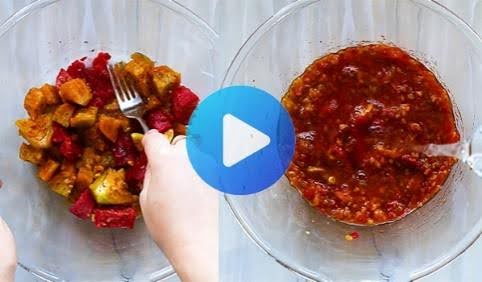Smoothies seem like such a healthy choice, right? You blend up fruits, maybe some yogurt, and boom – a quick meal or snack. But sometimes, these seemingly innocent drinks can secretly pack a ton of sugar and calories, working against your weight loss goals. I’ve seen it happen many times with clients. They think they are doing something great for their bodies, but the scale doesn’t budge, or worse, it goes up. The good news is that a few simple changes, what I call the “simple smoothie swap,” can turn your smoothie from a potential weight-gain trap into a powerful weight-loss tool.
Let’s break down why some smoothies might not be helping you lose weight.
The Sneaky Problems in Many Smoothies
It’s easy to go wrong with smoothies. You start with good intentions, but ingredients add up quickly.
Sugar Overload: This is probably the biggest issue. Many people use fruit juice as a base. Orange juice, apple juice, or tropical blends sound healthy, but they are often loaded with sugar, sometimes as much as soda. Even natural sugars, when consumed in large amounts without the fiber of the whole fruit, can spike your blood sugar. Then you add fruits, especially very sweet ones like mangoes, pineapples, and lots of bananas. Maybe you add honey, maple syrup, or agave nectar for extra sweetness. Before you know it, your “healthy” smoothie has more sugar than a candy bar. This sugar rush leads to an energy crash later, often making you crave more sugary or high-carb foods. For women, managing blood sugar is especially important for hormonal balance and steady energy levels. Big sugar spikes can disrupt this balance.
Calorie Bombs: Calories can hide easily in smoothies. Large amounts of fruit, full-fat yogurts or milk, big scoops of nut butter, coconut oil, avocado, chia seeds, flax seeds – while many of these are healthy fats, the calories add up fast. A smoothie can easily top 500, 600, or even more calories. If you’re drinking this in addition to your regular meals, or even as a meal replacement without adjusting your other food intake, you might be consuming more calories than you burn, which leads to weight gain.
Missing Protein: Protein is super important for weight loss. It helps you feel full and satisfied, so you’re less likely to snack between meals. It also helps maintain muscle mass while you’re losing fat. Muscle burns more calories than fat, even at rest, so keeping your muscle is key for a healthy metabolism. Many simple fruit smoothies lack a significant protein source. Without enough protein, you might feel hungry again soon after drinking your smoothie.
Not Enough Fiber: Fiber is another weight-loss hero. Like protein, it helps with fullness. It also slows down the absorption of sugar into your bloodstream, preventing those energy spikes and crashes. While fruits contain fiber, blending can break some of it down. More importantly, many smoothies skip out on fiber powerhouses like leafy greens (spinach, kale) or seeds (chia, flax, psyllium husk). Some people also use fruit juices instead of whole fruits, completely removing the fiber.
So, you can see how a seemingly healthy drink can become problematic. But don’t worry, the fix is straightforward.
Introducing the Simple Smoothie Swap
The core idea is simple: swap out the high-sugar, high-calorie, low-nutrient ingredients for better choices that support your weight loss journey. It’s not about deprivation; it’s about making smarter choices that keep you full, energized, and burning fat.
Think of it like upgrading your smoothie. You’re taking the basic model and adding features that make it work better for your goals. Let’s look at the specific swaps you can make.
Smart Ingredient Swaps for Weight Loss
Here’s how to rebuild your smoothie, ingredient by ingredient:
1. The Liquid Base Swap
You Might Be Interested In: Learning more about The Complete Smoothie Detox & Weight Loss Program
- Instead of: Fruit juice (apple, orange, pineapple), sweetened almond/soy milk, full-fat dairy milk. These are often high in sugar and calories without much nutritional benefit.
- Swap with: Water (zero calories), unsweetened almond milk, unsweetened cashew milk, unsweetened soy milk, unsweetened coconut milk (the beverage, not canned), or even cooled green tea. These options drastically cut down on sugar and calories, providing a neutral base for your other ingredients. Water is always a great choice. Unsweetened plant milks usually have only 30-60 calories per cup, compared to 120+ calories and lots of sugar in juice.
2. The Fruit Swap (and Portion Control)
- Instead of: Loading up on high-sugar fruits like mangoes, pineapples, grapes, and multiple bananas. Using canned fruits in syrup.
- Swap with: Prioritize lower-sugar fruits like berries (strawberries, blueberries, raspberries, blackberries). These are packed with antioxidants and fiber. Use bananas sparingly (maybe half a small banana) for creaminess, not as the main fruit. Include fruits with skin on when possible (like apples or pears, well-washed) for extra fiber. Most importantly, control your portions. Aim for about 1/2 to 1 cup of fruit total per smoothie. You can also sneak in vegetables.
- Bonus Veggie Swap: Add a large handful of spinach or kale. You honestly won’t taste it much, especially with berries, but it adds tons of vitamins, minerals, and fiber with very few calories. Zucchini (raw, peeled) and cucumber also blend well and add liquid without strong flavor. Cooked and cooled cauliflower can add creaminess too.
3. The Sweetener Swap
- Instead of: Honey, maple syrup, agave nectar, table sugar, sweetened yogurts. These are all forms of added sugar that contribute calories and spike blood sugar.
- Swap with: Let the natural sweetness of the fruit be enough. If you really need more sweetness, use a tiny amount of a natural, zero-calorie sweetener like stevia or monk fruit extract. Spices like cinnamon or vanilla extract can also add perceived sweetness without sugar. Over time, your taste buds will adjust, and you’ll appreciate the natural flavors more.
4. The Protein Power-Up Swap
- Instead of: No protein source, or just a small amount from milk/yogurt.
- Swap with: Add a dedicated protein source. This is crucial for satiety and muscle maintenance. Good options include:
- Protein Powder: Whey, casein, egg white, or plant-based powders (pea, soy, hemp, brown rice). Choose one with minimal added sugar and fillers. Aim for 20-30 grams of protein per smoothie, especially if it’s replacing a meal.
- Plain Greek Yogurt: High in protein and adds creaminess. Choose plain, unsweetened varieties (0% or 2% fat).
- Cottage Cheese: Another protein powerhouse that blends surprisingly well and adds a creamy texture.
- Tofu (Silken): A good plant-based option that blends smoothly.
5. The Healthy Fat Swap (and Portion Control)
- Instead of: Large amounts of nut butter (multiple tablespoons), coconut oil, or other high-calorie fats. Using sweetened or flavored nut butters.
- Swap with: Include a small amount of healthy fat. Fats help with satiety and nutrient absorption but are calorie-dense. Good choices include:
- 1 tablespoon of chia seeds or flax seeds (also great fiber sources).
- 1/4 of an avocado (adds amazing creaminess).
- 1 tablespoon of natural, unsweetened nut butter (almond, peanut, cashew). Measure it carefully.
- A small sprinkle of nuts or seeds on top instead of blended in.
6. The Fiber Boost Swap
- Instead of: Smoothies lacking substantial fiber.
- Swap with: Intentionally add fiber sources beyond just fruit.
- Leafy Greens: Spinach, kale, romaine.
- Seeds: Chia seeds, flax seeds (ground flax is easier to digest), psyllium husk (start with a small amount, like 1 teaspoon, and drink plenty of water).
- Vegetables: Zucchini, cucumber, cauliflower.
- Oats: A tablespoon or two of rolled oats can add soluble fiber.
Building Your “Weight Loss Warrior” Smoothie
Okay, let’s put it all together. Here’s a template for a smoothie designed to help with weight loss:
- Liquid Base (1 – 1.5 cups): Water, unsweetened almond milk, unsweetened soy milk, green tea.
- Protein Source (20-30g): 1 scoop protein powder, 1/2 cup plain Greek yogurt or cottage cheese.
- Healthy Fat (1 serving): 1 tbsp chia/flax seeds OR 1/4 avocado OR 1 tbsp nut butter.
- Fiber/Veggies (1-2 handfuls): Spinach, kale, zucchini, cucumber, cauliflower.
- Low-Sugar Fruit (1/2 – 1 cup): Berries, half a small banana, apple chunks.
- Optional Flavor Boost: Cinnamon, vanilla extract, unsweetened cocoa powder, ginger.
- Ice: Add as needed to reach desired consistency.
Blend everything until smooth. This combination provides protein, fiber, healthy fats, and controlled carbohydrates, keeping you full and nourished without excessive calories or sugar.
Why This Simple Swap Strategy Works So Well
Making these changes isn’t just about cutting calories; it’s about changing how your body processes the food.
- Better Calorie Control: By swapping high-calorie ingredients for lower-calorie ones (like juice for water, or large amounts of nut butter for seeds), you naturally reduce the overall calorie count of your smoothie, making it easier to stay within your daily calorie goals for weight loss.
- Stable Blood Sugar: Reducing added sugars and high-sugar fruits, while adding protein, fiber, and healthy fats, helps prevent rapid spikes and crashes in blood sugar. Stable blood sugar means fewer cravings, more consistent energy levels, and less likelihood that your body will store excess sugar as fat. This is particularly beneficial for women managing hormonal health.
- Increased Satiety (Feeling Full): Protein and fiber are champions of satiety. They take longer to digest and send signals to your brain that you are full. A smoothie built with these swaps will keep you satisfied for hours, reducing the urge to snack on less healthy options later.
- Higher Nutrient Density: Swapping sugary, empty-calorie ingredients for things like leafy greens, berries, seeds, and lean protein means you’re getting more vitamins, minerals, antioxidants, and phytonutrients per calorie. You’re fueling your body with quality ingredients.
- Muscle Maintenance: Getting enough protein, especially when you’re eating fewer calories to lose weight, helps protect your lean muscle mass. Losing muscle can slow down your metabolism, making weight loss harder. Protein helps ensure you’re primarily losing fat, not muscle.
- Improved Digestion: Fiber from vegetables, fruits, and seeds promotes regular digestion, which is an important part of overall health and weight management.
Making the Swap Stick: Turning It Into a Habit
Knowing the swaps is one thing; making them part of your routine is another.
- Consistency is Key: Aim to have your swapped-out smoothie regularly, perhaps as a breakfast replacement or a post-workout recovery drink. Consistency helps your body adapt and yields the best results.
- Prep Ahead: Make smoothie packs. Portion out your fruits, veggies, seeds, and protein powder (if using) into individual freezer bags or containers. In the morning, just grab a pack, add your liquid base and any fresh ingredients like yogurt or avocado, and blend. This saves time and makes it easy to stay on track.
- Listen to Your Body: Pay attention to how different smoothie combinations make you feel. Do they keep you full until your next meal? Do you have steady energy? Adjust ingredients based on your hunger and energy levels.
- Meal Replacement vs. Snack: Be clear about the role of your smoothie. If it’s replacing a meal (like breakfast), make sure it’s balanced and substantial enough (include protein, fat, fiber). If it’s a snack, keep the portion size and calories smaller. A 500-calorie smoothie snack can hinder weight loss.
- Part of a Bigger Picture: Remember, smoothies are just one part of a healthy lifestyle. Combine your smart smoothie habits with a balanced diet of whole foods (lean proteins, vegetables, whole grains, healthy fats) and regular physical activity for the best weight loss results.
Watch Out for These Potential Smoothie Traps (Even Healthy Ones)
Even with healthy swaps, you can still run into issues if you’re not mindful.
- Portion Distortion: Just because the ingredients are healthy doesn’t mean you can drink an enormous smoothie. Calories still count. Stick to reasonable portion sizes (around 16-20 ounces is usually sufficient for a meal replacement).
- The “Health Halo”: Don’t assume that because your smoothie is healthy, you can indulge more elsewhere in your diet. Stay mindful of your overall daily intake.
- Relying Solely on Smoothies: While convenient, don’t replace all your meals with smoothies. Chewing whole foods is also important for digestion and satiety signals. Aim for variety in your diet.
- Forgetting Whole Foods: Smoothies are great, but don’t forget the importance of eating whole fruits and vegetables too. The act of chewing and the intact fiber in whole foods offer unique benefits.
Special Notes for Women
Weight loss can sometimes feel different for women due to hormonal fluctuations and metabolic factors. These smoothie swaps can be particularly helpful:
- Iron Boost: Many women need more iron. Pairing vitamin C-rich fruits (like strawberries or a small amount of orange) with iron-rich leafy greens (like spinach) in your smoothie can help your body absorb the plant-based iron more effectively.
- Calcium Intake: Ensure you’re getting enough calcium, crucial for bone health. Using plain Greek yogurt, fortified unsweetened plant milks, or adding leafy greens like kale can contribute to your daily calcium needs.
- Managing Cravings: The blood sugar stability provided by these swapped-out smoothies can be a game-changer for managing cravings, especially those linked to hormonal cycles. Protein and fiber help keep you steady.
- Metabolic Support: Prioritizing protein helps maintain muscle mass, which is vital for keeping your metabolism running efficiently as you lose weight.
Making a simple swap in your daily smoothie might seem like a small change, but it addresses the core issues that often turn smoothies into weight loss saboteurs – excess sugar, hidden calories, and a lack of filling protein and fiber. By consciously choosing better ingredients, you transform your smoothie into a delicious, satisfying tool that actively supports your health and weight loss efforts. It’s about making your smoothie work for you, not against you.
Related YouTube Video
Final Thoughts
Changing how you build your smoothie is a practical step you can take today. It doesn’t require complicated meal plans or exotic ingredients. It’s about understanding what goes into your blender and making smarter choices. This simple smoothie swap focuses on nutrient density, satiety, and blood sugar control – key factors that can lead to significant and sustainable weight loss results when combined with an overall healthy lifestyle. Give it a try and see how much better you feel.







